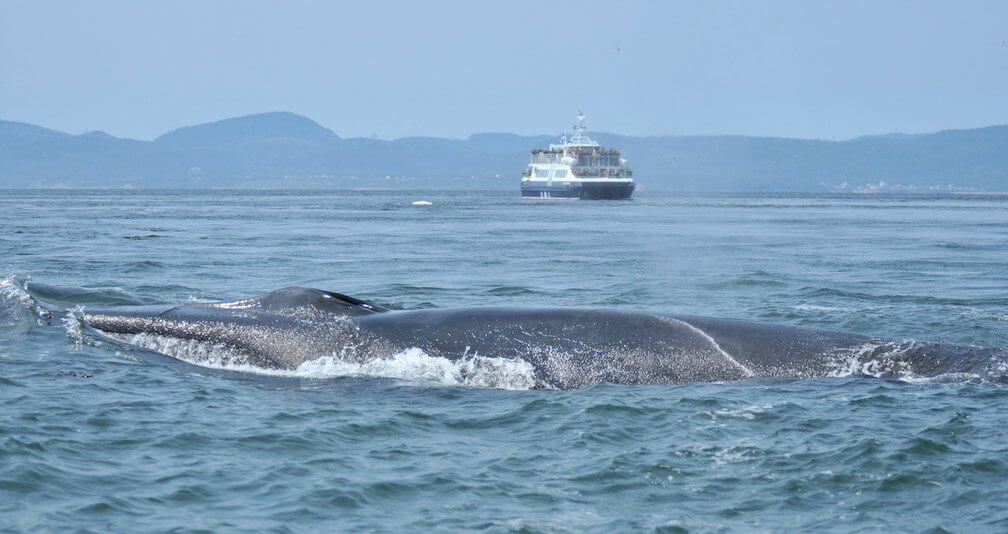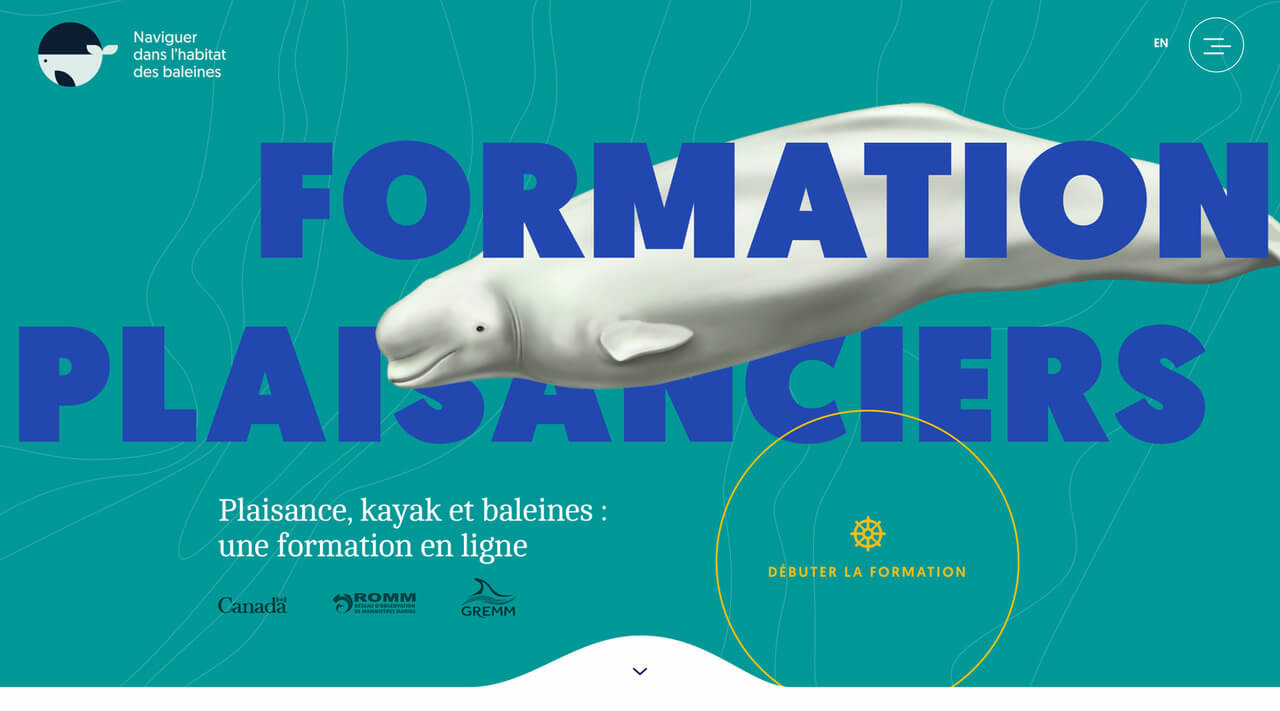If you choose a whale watching cruise
Un des avantages d’embarquer pour une croisière aux baleines, c’est l’apport des capitaines, guides et naturalistes expérimentés. On the boats, experienced naturalists are an excellent source of information on the species encountered during a trip. They also get you involved in the process of finding whales. However, whether you are in a kayak, sailboat, Zodiac or another vessel, it can be stressful for the cetaceans. A company that is mindful of the animals’ welfare and believes in respectful wildlife watching will reduce its vessel’s speed and follow regulations in the presence of whales.
Tip: If you are hoping to watch belugas, watch them from the shore, as it is illegal to approach them on the water. As for blue whales: a distance of 400 meters needs to be maintained between a boat and a blue whale.





